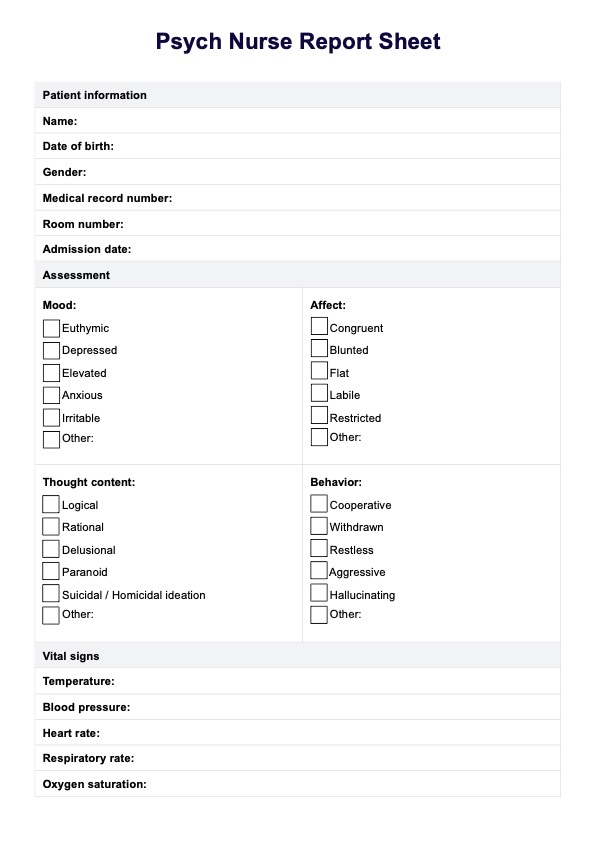Document psychiatric nursing notes by recording observations, assessments, interventions, and patient responses in a structured format. Include relevant details such as mood, affect, behavior, vital signs, and any safety concerns or changes in mental status.

Psych Nurse Report Sheet
Streamline patient care with our comprehensive Psych Nurse Report Sheet, designed for efficient communication and organization. Download now!
Psych Nurse Report Sheet Template
Commonly asked questions
Write a nursing report by providing a concise summary of the patient's condition, including assessments, interventions, and responses to treatment. Use a systematic approach, focusing on critical information such as vital signs, medications, care plans, and any significant events or changes in the patient's status.
The Mental Status Examination (MSE) is the most critical assessment tool for the psychiatric nurse. It evaluates vital aspects of the patient's mental health, including mood, affect, thought content, perception, cognition, and insight, providing valuable insights into the patient's overall mental status and functioning.
EHR and practice management software
Get started for free
*No credit card required
Free
$0/usd
Unlimited clients
Telehealth
1GB of storage
Client portal text
Automated billing and online payments











